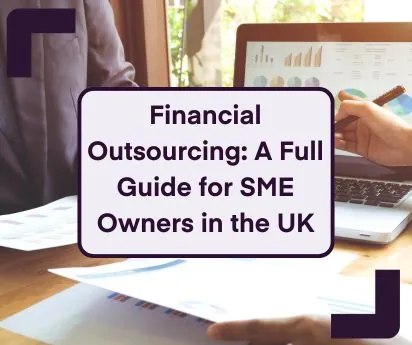
End of tax year planning checklist
1 Nov 2020April 5th is a significant day for anyone liable to pay tax. That date marks the end of the tax year, and it provides an opportunity to finally minimise tax liabilities for the current year and plan ahead for reducing liabilities for the next tax year, which begins on 6th April.
April is normally the time when any changes in income tax and National Insurance rates and thresholds come into effect. However, this year, there are only minor changes — and there are winners and losers.
The thresholds and rates for Income Tax remain the same. The Income Tax thresholds will remain frozen until 2026 although the Chancellor announced a planned reduction in the basic rate from 20 percent to 19 percent in 2024. The National Insurance threshold will rise by £3000 to £12,570 in July 2022, but contributions will increase by 1.25 percent in April 2022.
Review your options
These changes make it essential to review all the tax savings available to you, whether you are employed, self-employed or retired. In this article, we set out the main areas that most taxpayers should consider. However, personal circumstances vary, so it may be important to take professional advice so you can maximise your savings.
Transfer income tax allowances between couples
Each individual has a tax free allowance of £12,570. After that they pay Income Tax at basic rate or higher rates depending on earnings. Spouses or civil partners can transfer any unused allowance between themselves to ensure they maximise the savings. So, if one person had income of £10,000, they could transfer the unused amount of £2,570 to the person with higher earnings, reducing their liability.
Related: Income tax losses: What self-employed/sole traders need to know
Review savings and investments
You pay income tax on interest above a certain level from savings and investments, so it is important to review your investments to ensure that you are using the most tax-efficient plans. Basic rate taxpayers have a Personal Savings Allowance of £1,000 and higher rate taxpayers have an allowance of £500. Any interest above those figures is taxable.
Spouses and civil partners can transfer parts of their allowance to ensure both enjoy the maximum benefits. It is also possible to bring forward savings interest payments due in the next tax year by closing an account before 5th April. That allows you to include the interest in any unused Personal Savings Allowance.
Related: Running a business from a rented property
Increase ISA investments
An ISA is a tax-efficient method of saving - each person is allowed to invest up to £20,000 in an ISA without incurring any tax liability. Married couples or civil partners can invest up to £40,000.
If you have spare income or have savings in less tax-efficient schemes, it can pay to top up your own or your partner’s ISA. If you cannot top up the ISA in the current tax year, you can carry your allowance forward to another tax year.
Top-up pension contributions
Making contributions to a personal pension fund is one of the most efficient ways of reducing your tax bill. You can get tax relief on contributions equivalent to 100 percent of your salary up to a maximum of £40,000 per year.
If you haven’t contributed the maximum amount in the current year, you can carry it forward to use in any of the next three years. Although you should aim to make the maximum possible contributions every year, you must not exceed the lifetime allowance, which is just over £1 million. If you do any further contributions will incur a tax charge.
Use up all Capital Gains Tax allowances
If you have made capital gains during the current tax year, make sure to claim all your Capital Gains Tax allowances, currently £12,300. If you have made a loss when you dispose of any assets, this can reduce your tax liability.
If you have any unused allowance, you cannot carry this forward to the next tax year, so it may pay to bring forward any disposals before the end of the tax year. Alternatively, you can transfer allowances or disposable assets between spouses or civil partners so that both use the maximum allowance, which would total £24,600.
Related: Salaried director: Can a company pay its director with a gross salary?
Make gifts and assess Inheritance Tax plans
Looking ahead, one way to minimise your Inheritance Tax liability is to reduce the eventual size of your estate by making gifts within the tax free allowance. The annual tax-free allowance is £3,000 for each person and you can carry any unused allowance forward for one year. Married couples or civil partners can make gifts up to a total of £6,000.
If both carry forward their full allowance, they can make gifts of £12,000 in that tax year without Inheritance Tax liability. You can also make multiple gifts of £250 during a tax year, provided they are not given to anyone receiving gifts from within your £3,000 allowance.
Claim tax allowances on Gift Aid
If you make donations to charity or visit a venue that is a registered charity, you can claim tax relief of 20 or 25 percent of the donation. When you make the donation, sign a Gift Aid form to confirm that you are a UK-registered taxpayer. If two members of a family are taxpayers, the person on the highest tax rate should make the donation.
Take advantage of trading allowances
If you occasionally sell items, any funds you receive are liable to Income Tax. However, there is a trading allowance of £1,000 which you can use to offset any small gains. Similarly, if you rent out a room occasionally or offer driveway space for parking, any income is liable to tax.
There is also a property allowance of £1,000 to reduce your liability. However, if you are trading or marketing property on a larger scale, this would be treated as a business and you should consider registering your activities with HMRC.
Take alternative forms of income
Directors of limited companies can take different forms of remuneration to reduce income tax liability. For example, by taking a combination of a lower salary and a dividend, there may be tax savings. The dividend allowance is £2,000; above that figure you pay Income Tax at your normal rate. However, dividends are not subject to National Insurance contributions so there may be further savings, if you choose the most efficient remuneration mix.
Invest in business schemes
There are a number of business-related schemes that can provide tax-efficient investment opportunities if you have surplus funds available. The Enterprise Investment Scheme, for example, allows you to invest up to £1 million in qualifying companies with tax relief of 30 percent on your investment. If you retain the investment for more than 3 years, you won’t have to pay Capital Gains Tax when you dispose of it. As EIS Accountants, we are qualified to advise you best on how to make the most of this scheme, so get in touch if you have questions.
The Seed Enterprise Investment Scheme allows you to invest up to £100,000 in qualifying start-up companies. Tax relief is higher at 50 percent of your investment and, like the Enterprise Investment Scheme, the same Capital Gains Tax benefits apply.
Support from Accounts & Legal
This article has briefly outlined the main areas of your income where you can reduce your Income Tax or Capital Gains Tax liability in the current tax year, or in future years. However, if your tax affairs are more complex, you may find it useful to take professional advice with our tax services.
Our team of accountants and solicitors are highly experienced in personal and business tax issues and can help you to minimise your tax liability. Get in touch with us at info@accountsandlegal.co.uk. You can get an instant accountancy quote here.
Read More: How to pay Corporation Tax: A guide to rates & deadlines
Read More: A guide to Corporation Tax trading losses for business owners





















